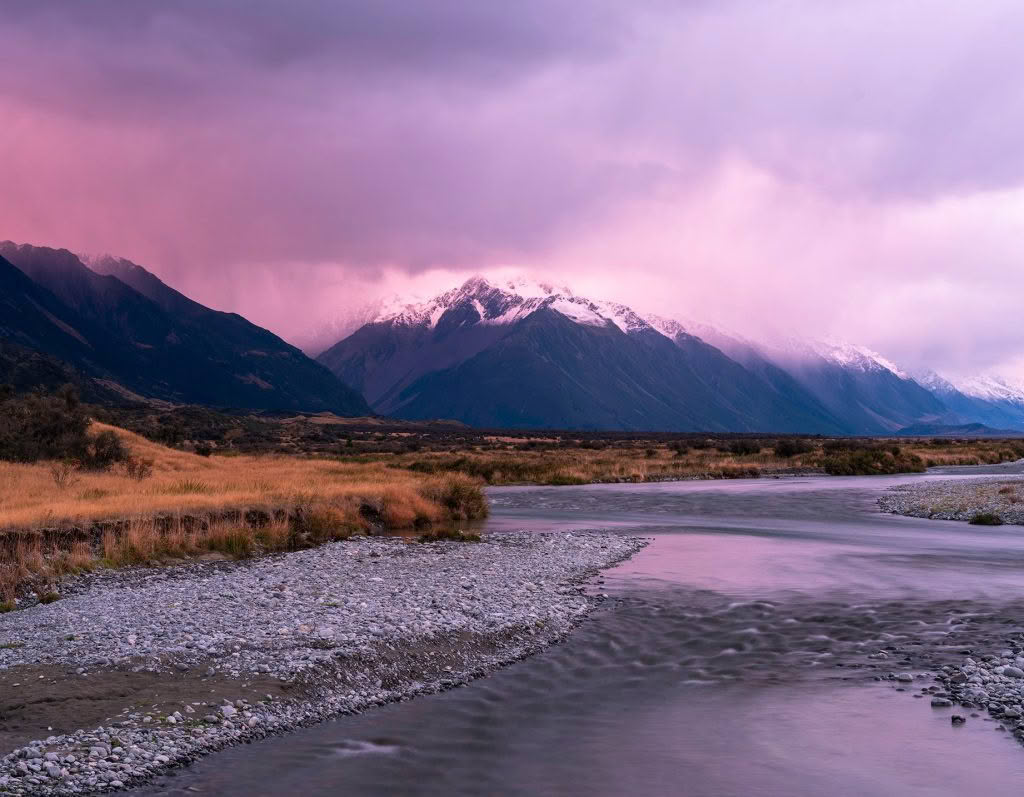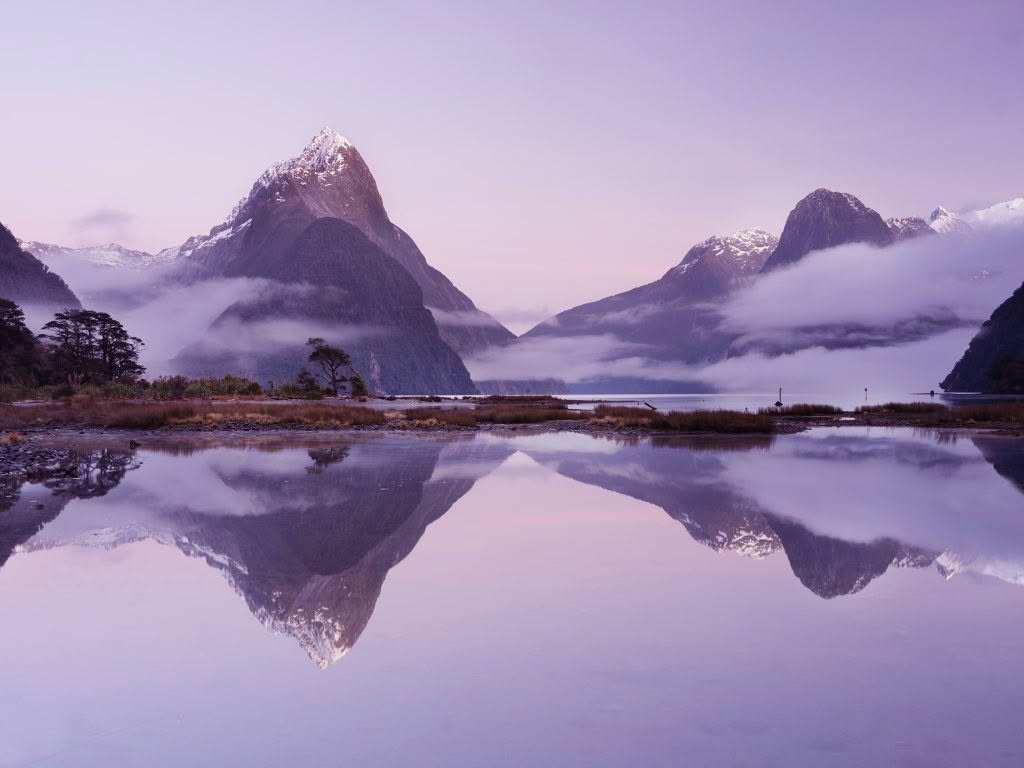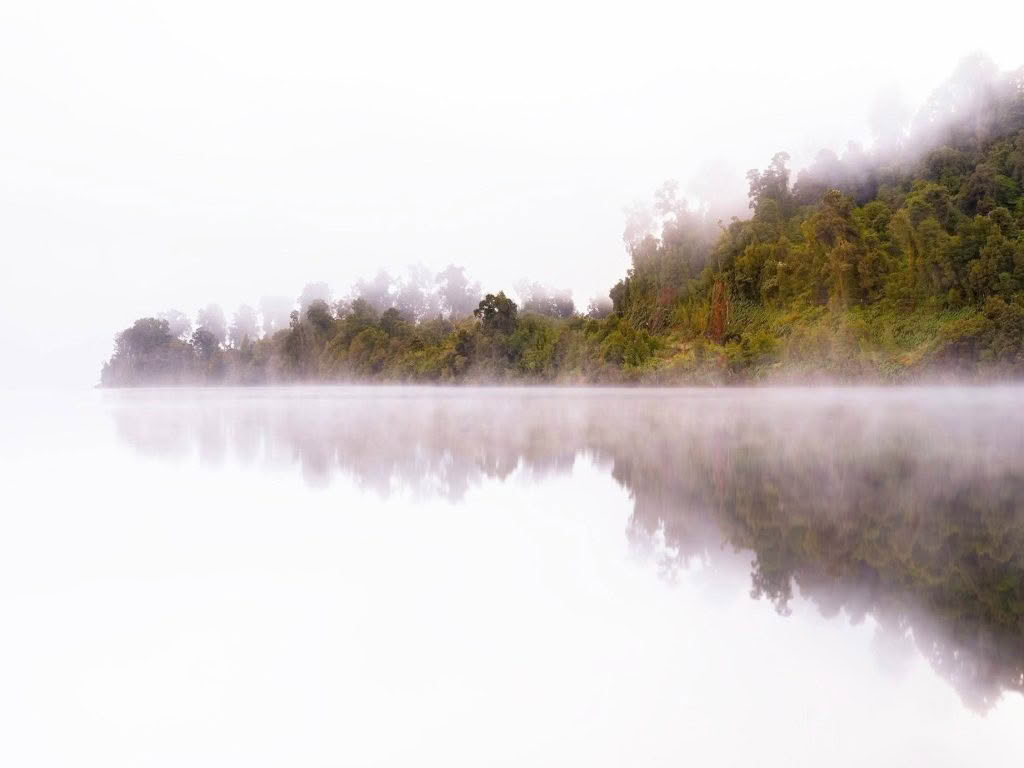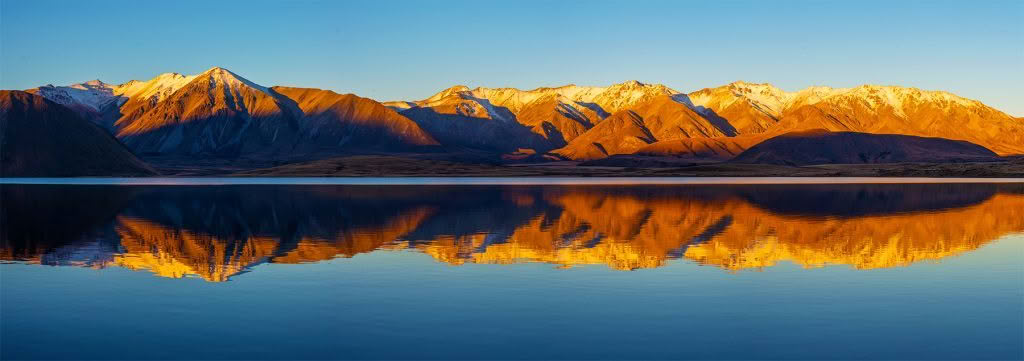The South Island of New Zealand is a dream for landscape photographers, and it’s no surprise that South Island New Zealand photography workshops attract travellers from around the world. Towering mountains, ancient glaciers, remote fiords, and vast open spaces provide some of the most dramatic scenery in the Southern Hemisphere.
There are countless locations that could make a list like this, and in reality five can never cover it all. For this guide, I’ve deliberately avoided the most famous, heavily photographed sites such as the Wanaka Tree or the Church of the Good Shepherd at Lake Tekapo. While both are iconic, they’re often crowded and lack the sense of discovery that makes photography in the South Island so rewarding. Instead, I’ve chosen five locations that deliver a mix of classic South Island grandeur and authentic experiences.
Whether you’re exploring independently or joining one of my South Island New Zealand photography workshops or Photography Tours, these destinations will provide both inspiration and challenge for your photography.
1. Aoraki / Mount Cook National Park – A Photographer’s Alpine Playground
Aoraki / Mount Cook is New Zealand’s highest peak, rising to 3,724 metres. It dominates a landscape of glaciers, alpine tarns, and sweeping valleys, making it one of the premier destinations for photography in the South Island.
The Hooker Valley Track is perhaps the most accessible option, with its suspension bridges, river crossings, and the dramatic view of Aoraki at the end. Sunset is especially rewarding to photograph Hooker Lake (which often has icebergs) in the dusk light with Mt Cook framed in the center. Even in less favorable weather, the surrounding peaks and fast-changing skies provide moody, atmospheric images.
Other highlights include sunrise at Tasman Lake where you can also capture icebergs floating on the terminal lake with stunning mountains behind, and the Sealy Tarns Track, which rewards the climb with expansive alpine views. Also the Tasman Valley provides some exceptional opportunities for expansive photography. Every corner of this park offers fresh compositions, and it’s easy to spend several days here without exhausting your opportunities.

2. Milford Sound – Fiordland’s Dramatic Landscapes
Milford Sound is one of those rare places that exceeds its reputation. Even though it is one of the most visited natural attractions in New Zealand, its sheer scale and wild beauty leave a lasting impression on every photographer.
Sheer cliffs rise straight from the water, waterfalls tumble hundreds of metres, and the sense of isolation is profound despite the number of visitors. Morning often brings calm reflections on the fiord, while after rain, dozens of temporary waterfalls appear on the cliff faces.
Photography options range from shore-based compositions featuring Mitre Peak to boat cruises that bring you directly beneath the waterfalls. For those with time to explore further Doubtful Sound is another stunning fjord worthy of discovery.
There are many stops along the Milford Road itself that offer great photography options. The Marian Track provides the opportunity to capture some forest and wild river scenes, eventually finishing at Lake Marian – a beautiful and very photogenic alpine lake. Lake Gunn walk is a good opportunity to capture the stunning Beech forest of Fiordland.

3. Haast Pass – Waterfalls, Canyons, and Rivers for Photography
Haast Pass, part of State Highway 6 linking the West Coast with the Southern Lakes region, is a spectacular drive filled with photographic stops. It’s a place where slowing down pays off.
Thunder Creek Falls and Fantail Falls are the most famous roadside waterfalls, but smaller cascades appear throughout the valley after rain. The Blue Pools, with their strikingly clear glacial water, provide a completely different subject, framed by swing bridges and forested backdrops.
Beyond the main attractions, the Haast River itself is an excellent subject, winding its way through the valley with a distinctive blue-green colour. Exploring short tracks into the surrounding forest often reveals moss-covered canyons and hidden streams — perfect for longer exposures. For many photographers, this stretch of highway becomes an all-day stop rather than a simple transit route.
Many photographers choose to explore Haast Pass independently, but participating in South Island New Zealand photography workshops ensures you can capture the best waterfalls, rivers, and forest compositions with expert guidance.

4. Fox and Franz Josef Glaciers – West Coast Wild Scenery
Fox and Franz Josef are two of the most accessible glaciers in the world, descending from the Southern Alps. In recent years, direct access to the glaciers has become more limited due to natural changes in the ice, but the valley walks still provide dramatic viewpoints. Helicopter flights are another option, offering close-ups of crevasses, seracs, and icefalls that simply can’t be captured from the ground.
The surrounding area also provides plenty of variety for photographers: Lake Matheson near Fox Glacier is renowned for its reflections of Aoraki / Mount Cook and Mount Tasman. Gillespies Beach is a wild West Coast beach offering a variety of opportunities for photography including of the Southern Alps if the conditions allow. The small settlement of Okarito with it’s lagoon and outstanding views is a great option as are Lakes Mapourika and Lake Wahapo early in the morning where they are often covered in mist.

5. Ashburton Lakes – Remote High Country Photography
Tucked away in the Canterbury high country, the Ashburton Lakes are often overlooked in favour of the better-known southern lakes. Yet they offer some of the most peaceful and rewarding landscapes in the South Island.
Lakes Clearwater, Heron, and Camp are surrounded by open tussocklands and framed by mountain ranges. The lack of development and relative remoteness give the area a quiet, expansive feel. On still days, the reflections are superb, while in harsher weather the rugged setting delivers equally striking images.
This region changes dramatically across the seasons — from golden summer grasses to snow-packed peaks in winter. For photographers seeking variety beyond the more tourist-heavy locations, the Ashburton Lakes provide an authentic alternative.

Planning Your Landscape Photography Trip
The five locations above are a solid beginning, but they’re really just a introduction into a landscape that stretches far beyond any list. Wild coastlines, high alpine passes, and quiet valleys all wait for those willing to explore with a camera in hand.
One thing I’ve learned over the years is that planning matters, but so does flexibility. Distances are greater than they look on the map, and the weather has a way of humbling even the best-laid plans. Being open to change, and responding to the light and conditions in front of you, often leads to the most rewarding photographs.
That’s where joining South Island New Zealand photography workshops can be valuable. Sometimes the best images come not from chasing a plan, but from being ready when the unexpected appears. You can explore more about my upcoming South Island tours, to find the journey that suits you.
Whether you travel alone or as part of a group, the South Island will challenge you, inspire you, and remind you why you first picked up a camera. It’s a place that gives more than you could ever capture — and that’s exactly what makes it so compelling.

